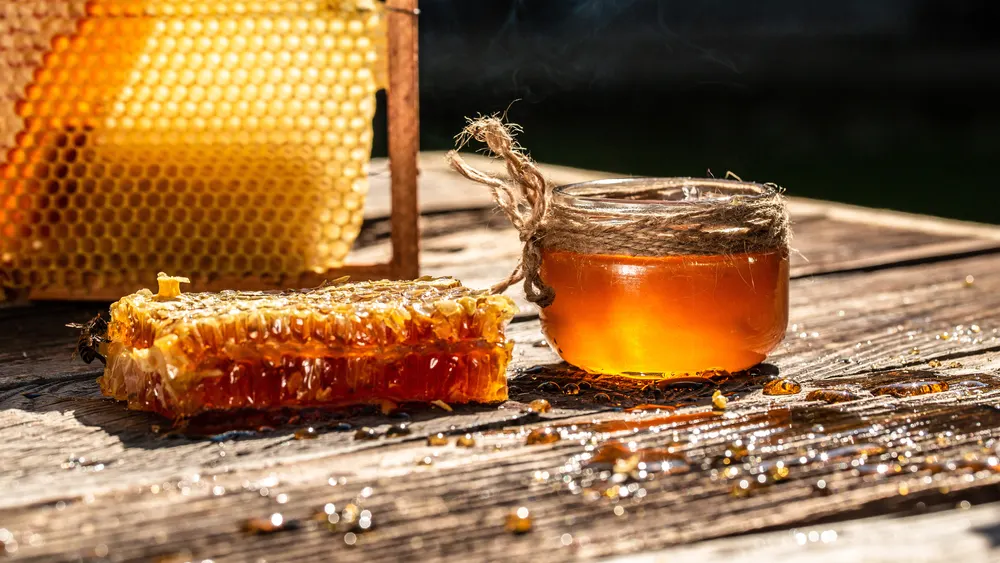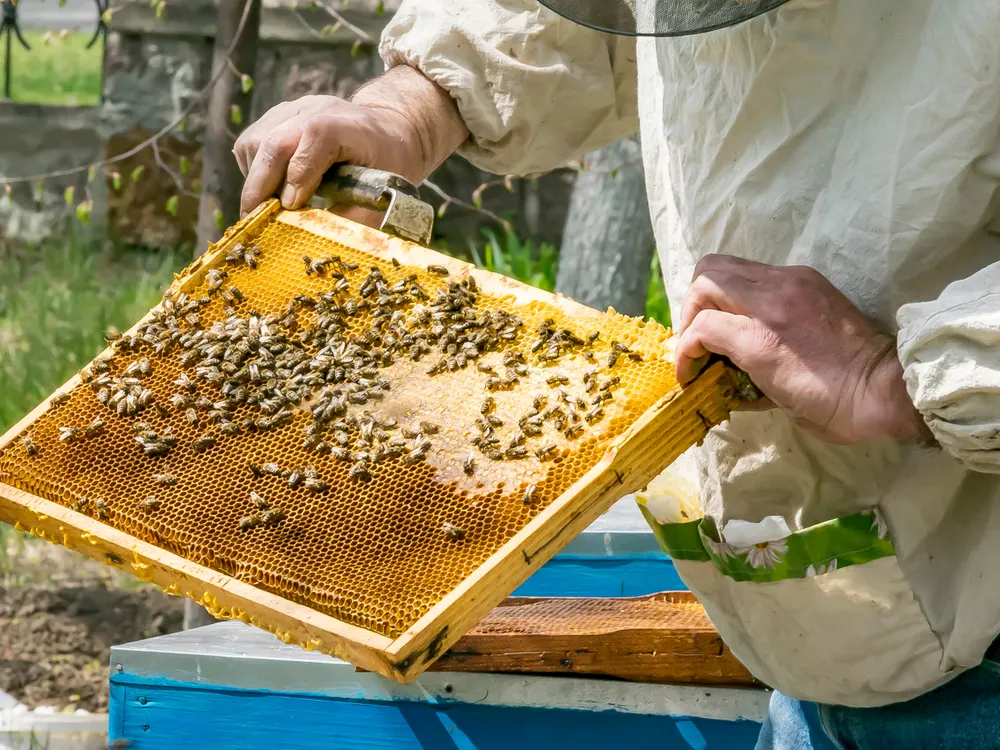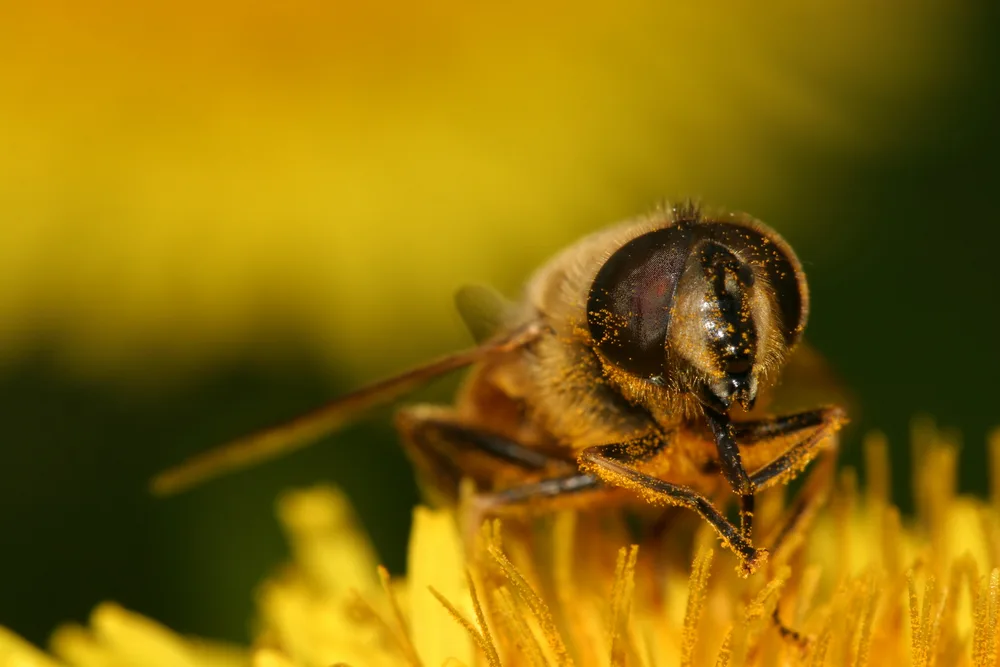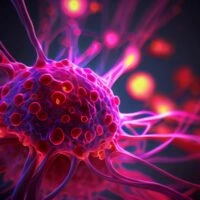Imagine if the sting of a bee—something so small, so ordinary—held the secret to fighting one of the deadliest forms of breast cancer. For centuries, honeybee venom has been part of traditional remedies, valued for its anti-inflammatory and pain-relieving properties. But now, modern science is uncovering something far more extraordinary: that this tiny drop of venom may hold lethal power against cancer cells that resist even the most advanced treatments.
Triple-negative and HER2-enriched breast cancers are notorious for their aggression and limited therapeutic options. They’re fast-growing, often unresponsive to targeted therapies, and disproportionately impact younger women and underserved populations. But in a recent breakthrough, researchers found that melittin—the primary compound in honeybee venom—can destroy these stubborn cancer cells in minutes, while leaving healthy cells virtually untouched.
What makes this even more remarkable isn’t just what melittin does, but how it does it—and the new frontiers it could open in cancer treatment. From shutting down vital growth signals to enhancing the effects of chemotherapy, this humble peptide may be rewriting the rules of oncology, one sting at a time.
A Natural Sting with Powerful Potential
Nature has long been a pharmacy in disguise—delivering everything from willow bark (aspirin) to mold (penicillin). Honeybee venom now joins that storied list with a surprising twist: the same substance that causes pain and swelling from a sting may be a weapon against some of the most treatment-resistant breast cancers.
The hero of this discovery is melittin, a small peptide that makes up nearly half of honeybee venom by dry weight. For decades, melittin was known primarily for its role in inflammation and pain. But researchers at the Harry Perkins Institute of Medical Research in Australia uncovered something much more compelling: melittin doesn’t just irritate—it kills cancer cells. And not just any cancer cells, but two of the most aggressive and difficult-to-treat subtypes—triple-negative breast cancer (TNBC) and HER2-enriched breast cancer.
What’s remarkable is melittin’s precision. In lab studies, melittin was able to pierce cancer cell membranes, essentially punching holes that led to rapid cell death—within 60 minutes—while sparing healthy, non-cancerous cells. “The venom was extremely potent,” said Dr. Ciara Duffy, the lead researcher on the study. “We found that melittin can completely destroy cancer cell membranes within an hour.”
This is more than just a curious biological phenomenon. Unlike many natural compounds that show activity in a lab but fall short in real-world applications, melittin is stable, accessible, and already producible synthetically. Venom samples from more than 300 honeybees confirmed consistent results, and further testing showed that venom from bumblebees, which lack melittin, had little to no effect on breast cancer cells. The implication? Melittin is the key, not just some incidental component of a complex mixture.
In an age where drug resistance is one of the biggest hurdles in oncology, melittin offers something tantalizing: a naturally derived compound that’s both powerful and precise, working not by one but multiple mechanisms. It disrupts membranes, inhibits cancer cell signaling, and appears to work even when conventional therapies do not.
The Challenge of Treating Aggressive Breast Cancers

Not all breast cancers are created equal. While many respond well to standard treatments like surgery, hormone therapy, and radiation, some subtypes are far more elusive—and far more deadly. Among them, triple-negative breast cancer (TNBC) and HER2-enriched breast cancer stand out for their aggressiveness, resistance to treatment, and poor survival outcomes.
Triple-negative breast cancer, which accounts for 10–15% of all breast cancers, is defined by the absence of three common receptors: estrogen, progesterone, and HER2. This means TNBC doesn’t respond to hormone-blocking drugs or HER2-targeted therapies, leaving chemotherapy as the primary option. Even then, recurrence rates are high and prognosis remains grim. According to the American Cancer Society, the five-year relative survival rate for metastatic TNBC can be as low as 12%.
HER2-enriched breast cancers, while more treatable thanks to targeted drugs like trastuzumab (Herceptin), also carry a major caveat: resistance. Although these drugs initially improve survival, many patients eventually relapse as the cancer finds ways to bypass the blocked pathways. Resistance to HER2-targeted therapies is common in late-stage disease, often leaving oncologists with limited tools.

What unites these two subtypes is their dependence on rapid cell growth driven by overactive receptor tyrosine kinases (RTKs)—notably HER2 and EGFR (epidermal growth factor receptor). These molecular switches fuel unchecked proliferation and survival, making them attractive but also notoriously tricky targets.
Standard drugs designed to block EGFR or HER2 signaling have shown limited efficacy in TNBC because the cancer cells often rely on collateral pathways to survive. HER2 therapies, while effective in early stages, rarely hold up in the long run without resistance.
This is where melittin’s potential becomes so significant. Rather than simply blocking one receptor or pathway, melittin appears to disrupt the entire communication system cancer cells depend on. By physically puncturing the membrane and suppressing RTK phosphorylation, melittin interrupts the biochemical instructions that tell cancer cells to grow, divide, and invade.
In a medical landscape where aggressive breast cancers often outsmart targeted drugs, melittin doesn’t just play the same game—it changes the rules.
How Honeybee Venom and Melittin Work

At first glance, honeybee venom may seem like an unlikely candidate for cancer therapy. But zoom in at the molecular level, and it reveals an elegant, multipronged assault on cancer cells—led by melittin, a 26-amino-acid peptide with surprising precision and potency.
Melittin’s first strike is physical. Its positively charged, amphipathic structure allows it to bind to the negatively charged membranes of cancer cells. Once attached, melittin forms tiny toroidal pores—about 4.4 nanometers wide—that puncture the membrane like microscopic harpoons. This rapidly disrupts the cell’s integrity, causing it to shrink, leak, and ultimately die. In live-cell imaging, researchers observed cancer cells losing viability within as little as 10 minutes, and full-scale membrane destruction in under an hour.
But the peptide doesn’t stop at brute force. Melittin also interferes with the biochemical signaling inside cancer cells, especially the ones reliant on epidermal growth factor receptor (EGFR) and HER2. These receptors sit on the surface of aggressive breast cancer cells and function like antennae, receiving growth signals that tell the cell to divide. Melittin interrupts this process by inhibiting the phosphorylation of EGFR and HER2, effectively silencing the “go” signals and halting cancer progression at the source.
Laboratory studies showed that both honeybee venom and melittin significantly reduced the activation of key survival pathways, including PI3K/Akt and MAPK, within minutes of treatment. In triple-negative (SUM159) and HER2-enriched (SKBR3) breast cancer cells, these effects were pronounced, while normal cells were largely unaffected. This selectivity is especially important, as it suggests melittin could potentially avoid the widespread toxicity often associated with conventional chemotherapy.
To confirm melittin’s role as the venom’s primary anticancer agent, scientists used an anti-melittin monoclonal antibody to block its activity. When melittin was neutralized, the cancer-killing effects of both the venom and the purified peptide were significantly reduced—further solidifying melittin’s central role.
Importantly, bumblebee venom—which lacks melittin—had no significant anticancer effect, even at higher doses. This contrast helps underscore that melittin is not just a component of honeybee venom, but its bioactive powerhouse.
And while melittin naturally occurs in bee venom, it can also be synthesized in the lab, allowing scientists to engineer modified versions with enhanced targeting abilities. These next-generation melittin peptides aim to amplify its selectivity while minimizing risks.
With a dual mechanism of membrane disruption and signal suppression, melittin doesn’t merely attack cancer cells—it overwhelms them. This sets the stage for how researchers are refining melittin’s targeting ability and combining it with existing treatments to push the boundaries of what’s possible in breast cancer therapy.
Targeted Peptide Design and Combination Therapy

While melittin’s natural ability to selectively attack cancer cells is striking, scientists are pushing its potential even further by re-engineering the molecule for greater specificity and synergistic strength—transforming a wild toxin into a refined therapeutic weapon.
One key innovation has been the modification of melittin’s structure to increase its affinity for cancer cells while reducing unintended damage to healthy tissue. Researchers identified that the positively charged C-terminal region of melittin is essential for binding to cancer cell membranes. When they substituted this region with negatively charged amino acids (creating a variant called DEDE-melittin), the peptide lost all anticancer activity. However, when they fused melittin with targeting sequences—like SV40 or the well-known TAT peptide from HIV—they were able to restore its potency, confirming the role of electrostatic interactions in melittin’s activity.
But perhaps the most promising advancement was the design of RGD1-melittin, a modified peptide that includes an RGD (arginine-glycine-aspartic acid) motif. This short sequence binds to integrins αvβ3 and αvβ6, which are overexpressed on the surface of many breast cancer cells and tumor-associated vasculature. The result? A bifunctional peptide that retains melittin’s cytotoxic power while homing in more precisely on cancerous tissue. In testing, RGD1-melittin showed a wider therapeutic window, causing less harm to normal cells than unmodified melittin, without sacrificing efficacy.
Beyond precision, melittin is also showing promise as a partner in combination therapies. When researchers combined melittin with docetaxel, a standard chemotherapy drug, in mouse models of triple-negative breast cancer, the results were dramatic: tumors shrank more significantly, cell death increased, and proliferation markers dropped by over 90%. The combination also led to a notable reduction in PD-L1, a protein that helps cancer cells evade immune detection. This points to a dual benefit—enhancing chemotherapy while also disarming cancer’s immune camouflage.
The implications are profound. Using melittin could allow clinicians to lower chemotherapy doses, reducing side effects while maintaining or even improving treatment outcomes. And because melittin forms pores in cancer cell membranes, it may also serve as a delivery gateway for other therapeutic agents, improving drug uptake and bioavailability. These developments move melittin from a naturally occurring molecule to a customizable platform—one that can be engineered, combined, and targeted with high precision.
Hope, Hype, and the Road Ahead

The idea that a bee’s sting could one day complement or even outperform modern cancer therapies is undeniably compelling. But as with many early-stage discoveries, the excitement must be balanced with a clear-eyed understanding of the challenges ahead. Melittin is not a cure—yet. It’s a promising molecule in a controlled laboratory setting, not a ready-made treatment.
To date, the vast majority of research on honeybee venom and melittin has been conducted in cell cultures and animal models. While these findings are encouraging—particularly the peptide’s rapid cell-killing ability, selectivity for cancer cells, and synergy with chemotherapy—clinical trials in humans have not yet begun for breast cancer. This is a critical step, and one that has often derailed other “miracle molecules” that looked powerful in a Petri dish but faltered in the complex terrain of the human body.
There are also important safety concerns. Bee venom is known to trigger allergic reactions in some individuals, ranging from mild swelling to life-threatening anaphylaxis. Although melittin can now be synthetically produced and modified for safer delivery, systemic toxicity and immune responses must be rigorously studied. The same properties that allow melittin to punch holes in cancer cells could, if not carefully controlled, harm healthy tissues.
Delivery is another hurdle. Injecting melittin directly into tumors, as done in mouse models, is not always feasible in clinical practice—especially for metastatic cancers. Researchers are investigating targeted delivery systems, including nanoparticles, antibody-drug conjugates, and engineered peptides like RGD1-melittin, which help direct the toxin more precisely to tumors while sparing surrounding tissue. These innovations are essential for turning melittin into a clinically viable therapy, but they require years of development, funding, and regulatory approval.
Still, the appeal is undeniable. Honeybee venom is widely available, relatively inexpensive, and could hold particular value in low-resource settings, where access to advanced cancer treatments is limited. It represents a bridge between nature and modern biotechnology—an example of how revisiting ancient remedies with contemporary tools can uncover entirely new paths.
For now, melittin remains a scientific “what if”—but one grounded in real data and growing momentum. The road to clinical application is long and filled with unknowns, but the journey has already reshaped how we think about venom, cancer biology, and the untapped pharmacological power of the natural world.
Rethinking Cancer Therapies Through Nature
In an era dominated by high-tech interventions and precision medicine, it’s easy to overlook the therapeutic potential of the natural world. But honeybee venom—and specifically melittin—reminds us that some of the most powerful tools in our fight against cancer may be hiding in plain sight, within the biology of organisms that have coexisted with us for millennia.
What sets melittin apart isn’t just its cytotoxicity, but its elegance and versatility. It attacks cancer on multiple fronts: disrupting membranes, silencing growth signals, enhancing the effect of chemotherapy, and even reducing immune evasion. That a single molecule can do all of this—with minimal harm to healthy cells—is remarkable. And yet, nature designed it not for healing, but for defense.
This paradox is worth reflecting on. As scientists re-engineer melittin for human therapy—improving its precision, pairing it with other drugs, or encasing it in nanoparticles—we’re seeing how natural compounds can be transformed into 21st-century medicine. Not as a replacement for established cancer treatments, but as a powerful complement, especially for cancers that resist conventional approaches.
The discovery also invites a broader shift in thinking. Instead of viewing nature as a backdrop to innovation, we might begin to see it as a collaborator. The bee’s sting is no longer just a warning; it’s a blueprint.
Of course, this is just the beginning. The path from lab bench to clinical bedside is long, and melittin’s journey is far from complete. But even now, it offers hope—not just for a new cancer drug, but for a new philosophy of drug discovery, one rooted in humility, curiosity, and a renewed respect for the natural world.
As research advances, one thing is clear: some of our most complex problems may yet be solved by the simplest of creatures. And in the case of breast cancer, a tiny peptide from a honeybee could one day help turn the tide.


